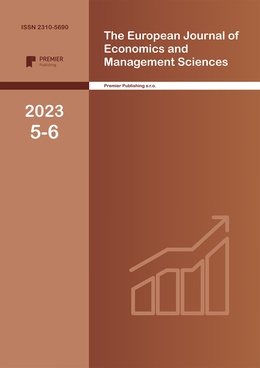A WESTERN BALKANS REGRESSION ANALYSIS ON RELATIONS BETWEEN ECONOMIC GROWTH, ISO STANDARDS, AND INTELLECTUAL PROPERTY
Authors
Enriko Ceko

Share
Annotation
With this paper research, I wanted to demonstrate the significance of connections between economic growth and ISO standards
and Intellectual property, which is missing in Western Balkans economies, while issues related to economic growth, quality,
quality management, ISO standards, and intellectual property have recently attracted more attention than other topics globally.
The methodology of the research involved collecting data and information about economic growth, ISO standards, and
intellectual property for Western Balkan economies, building tables, and handling a regression analysis for these three factors.
The main finding of this study is that there is no strong relationship between economic growth, ISO standards, and Intellectual
property in the Western Balkans.
The main conclusion of the study is that economic growth, besides other factors, especially hard factors like labor, land, and
capital, should be considered as a pattern for growth using soft factors of production like entrepreneurship and innovation, both
of them dependent hardly by intellectual property and ISO standards application, as a way on achieving more competitive
advantage, exceeding customer expectations by enhancing the quality of goods and services, as well as protecting unique values
of business entities and individuals.
Keywords
Authors
Enriko Ceko

Share
References:
1. Clare Naden, 24 February 2021, Studies show standards contribute to economic growth. The new ISO Library features evidence-based research on the impact of standards. Retrieved 25 th February 2023.
2. Joan Robinson. 1953. The Production Function and the Theory of Capital. The Review of Economic Studies, Volume 21, Issue 2, 1953, Pages 81–106, https://doi.org/10.2307/2296002.
https://academic.oup.com/restud/article-abstract/21/2/81/1555416?redirectedFrom=fulltext.
https://www.scribd.com/document/87188046/Joan-Robinson-the-Production-Function-and-the-Theory-of-Capital
3. Malthus, Thomas. 1798. Essay on the Principle of Population. Oxford: Oxford University Press (1993 printing).
4. Mark A. Lemley, Property, Intellectual Property, and Free Riding Archived 26 February 2009 at the Wayback Machine , Texas Law Review, 2005, Vol. 83:1031, page 1033, footnote 4.
5. Shapiro, Robert J.; Pham, Nam D.; Blinder, Alan S. (July 2007). "Economic Effects of Intellectual Property-Intensive Manufacturing in the United States"(PDF). Sonecon.com. World Growth. p. 29.
6. UNIDO, 2009, "The Role of Intellectual Property Rights in Technology Transfer and Economic Growth: Theory and Evidence"
7. Wróbel, A. E. 2019. Creative Facilitation in Innovation Management: Facilitator’s Role in Shaping Team Processes. The Technical University of Denmark.
8. WB. Western Balkans Regular Economic Report No.22. Fall 2022
9. WIPO. September 2007. "Measuring the Economic Impact of IP Systems". WIPO.
10. World Intellectual Property Organization (WIPO) (2016). Understanding Industrial Property. World Intellectual Property Organization. doi:10.34667/tind.36288. ISBN 9789280525939.
11. WIPO, 2021, "Understanding Copyright and Related Rights" (PDF). World Intellectual Property Organization. p. 4
12. WIPO. "The Concept of Intellectual Property"; p. 3.


